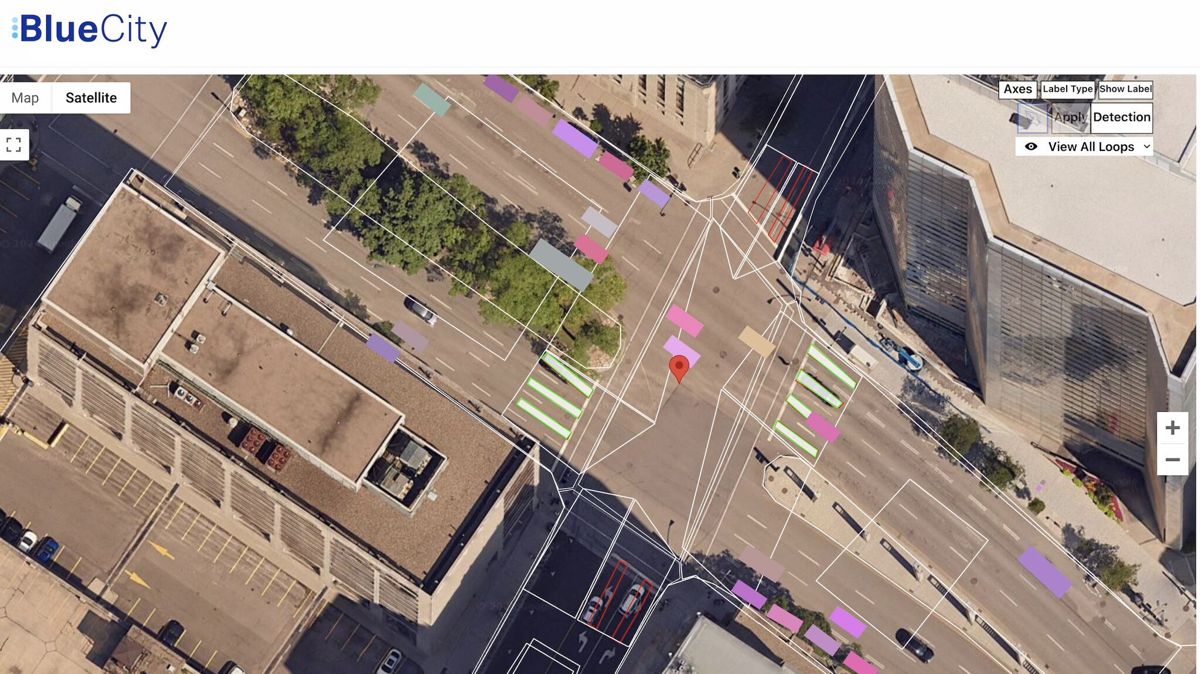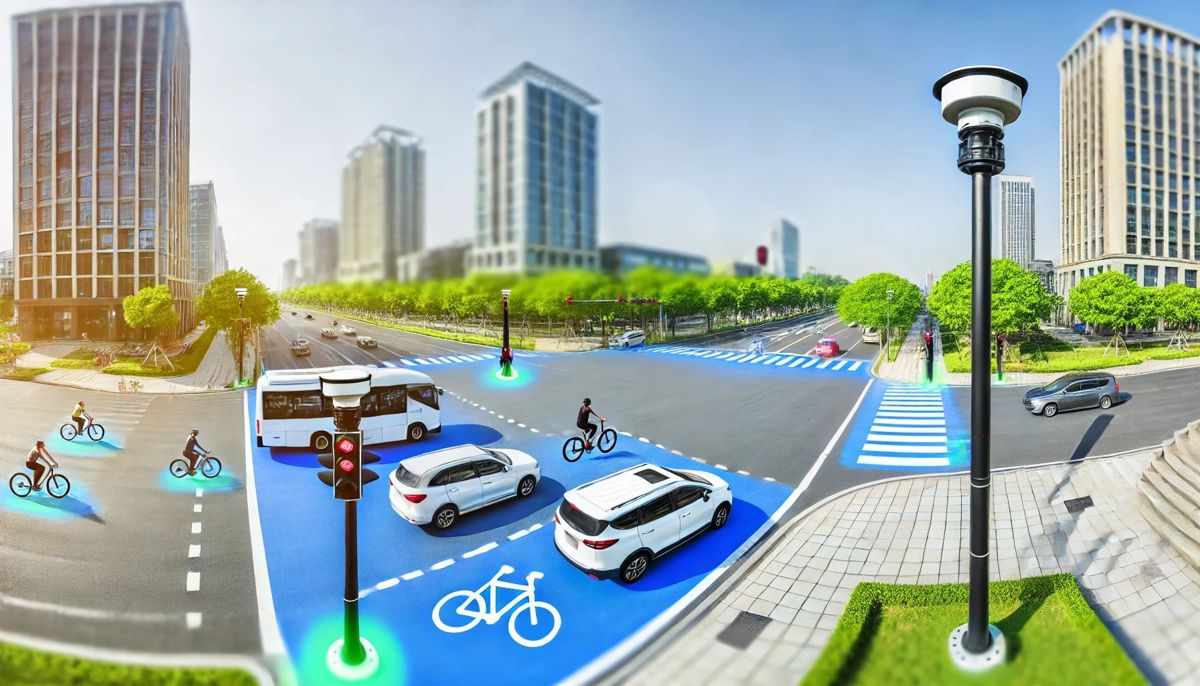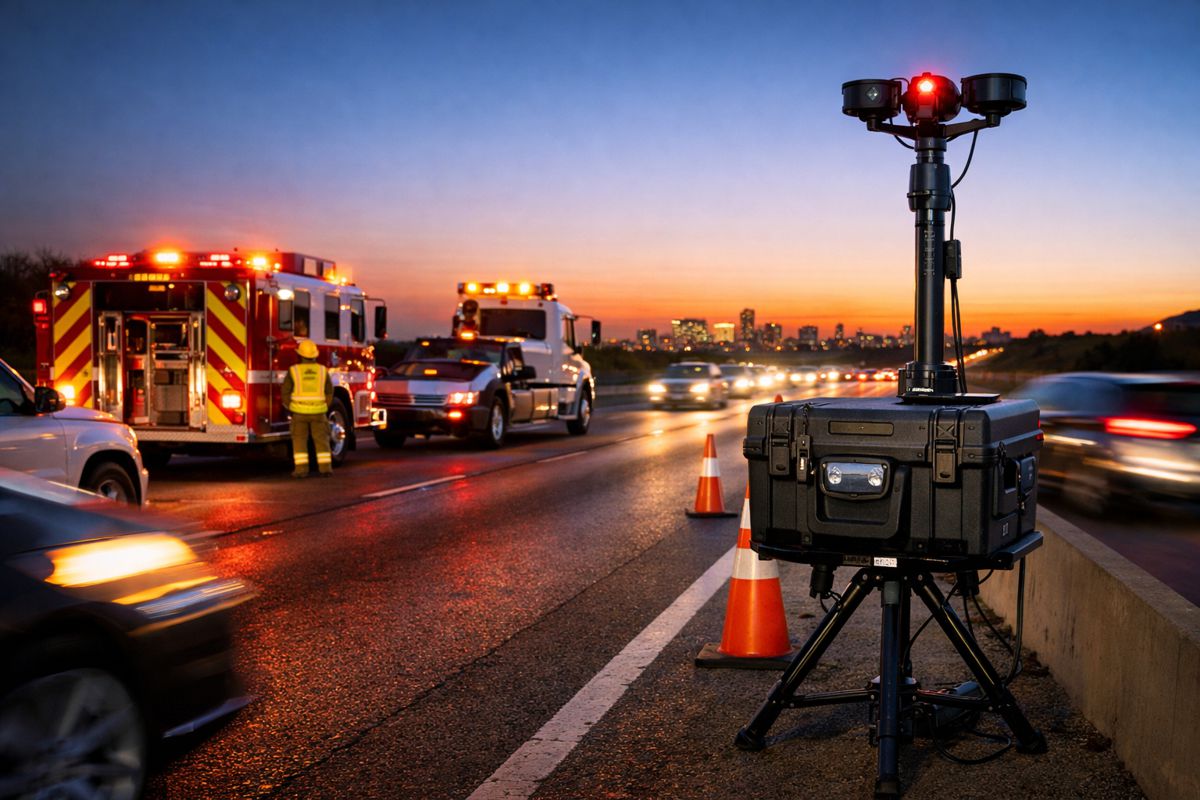Ouster’s Blue City is Pioneering the Future of Safe, Smart Traffic Control
Smart cities are no longer just a concept on the horizon—they’re rapidly becoming a reality, thanks to innovative technologies like Ouster’s Blue City.
Ouster, Inc., a global leader in high-performance lidar sensors and software solutions, has made a significant breakthrough in the field of traffic management by securing NEMA TS2 certification for its Blue City solution. This certification positions Blue City as the first lidar traffic solution to meet the stringent requirements of NEMA TS2, with the added benefit of using Buy America-compliant lidar.
But what does this mean for city planners, policymakers, and the future of urban traffic management? Let’s dive into how Blue City is set to revolutionise traffic control, improve safety, and pave the way for smarter, more efficient cities.
What Is Blue City?
At its core, Blue City is a turnkey traffic management solution designed to enhance traffic operations, planning, and safety. By combining Ouster’s advanced 3D lidar sensors with edge AI technology, Blue City captures detailed traffic data to enable active traffic actuation. This means it can control traffic lights, pedestrian crossings, and other critical infrastructure elements based on real-time conditions, significantly enhancing road safety and traffic flow.
What sets Blue City apart is its ability to deliver multi-modal traffic actuation and safety analytics in a single, streamlined system. With the help of a cloud-based analytics platform, it provides real-time monitoring and visualisation, offering instant insights that can be used by traffic managers to make informed decisions on the go.
“This certification is a testament to the quality and reliability of Ouster’s products,” said Asad Lesani, Ouster’s Vice President for Smart Infrastructure Products. “Smart traffic solutions offer an immense opportunity to improve roadway efficiency, carbon emissions, and safety for all road users. Ouster’s software-attached sales have continued to grow, and the NEMA TS2 certification will only further accelerate Blue City’s adoption in cities across North America.”

The Importance of NEMA TS2 Certification
The NEMA TS2 standard, set by the National Electrical Manufacturers Association, is a critical benchmark for traffic control systems in North America. It specifies the requirements for traffic control assemblies, such as traffic lights and pedestrian signals, ensuring they can handle the high demands of modern, intelligent transportation systems.
By achieving NEMA TS2 certification, Ouster’s Blue City solution has proven its reliability and compatibility with existing traffic infrastructure. It stands as the first lidar-based traffic management system to meet this rigorous standard while also complying with Buy America requirements. This not only enhances its appeal to municipalities looking to upgrade their traffic systems but also underscores Ouster’s commitment to supporting local manufacturing and supply chains.
Driving Safety and Efficiency with Cutting-Edge Technology
With its NEMA TS2 certification, Blue City is poised to transform how cities manage traffic. The integration of 3D lidar sensors allows for an unprecedented level of detail and accuracy in detecting and analysing traffic patterns. The sensors, paired with edge AI, enable Blue City to track the movement of vehicles, bicycles, and pedestrians in real-time, facilitating quicker, data-driven decisions that improve safety and reduce congestion.
Unlike traditional camera-based systems, lidar technology is less affected by challenging weather conditions like fog, rain, or glare from the sun. Moreover, Blue City’s privacy-centric design ensures that personal data isn’t compromised, making it a preferred choice for cities prioritising both safety and citizen privacy.
Growing Adoption Across North America
The Blue City system isn’t just theoretical—it’s already making waves in several cities across North America. With installations in over 250 intersections and counting, Ouster’s solution is rapidly gaining ground as a reliable and effective traffic management tool.
Two U.S. cities, Nashville and Chattanooga, have recently received $2 million SMART Grants from the U.S. Department of Transportation to implement the Blue City system to make streets safer. This investment signals a growing recognition of the potential benefits of lidar technology in urban traffic management.
In addition to these notable deployments, many other municipalities are evaluating or in the process of installing Blue City systems as they take steps to modernise their infrastructure. For these cities, Blue City offers an attractive proposition—improving safety, reducing emissions, and optimising traffic flow, all while protecting community privacy.
Why Lidar is the Future of Traffic Management
Lidar, which stands for Light Detection and Ranging, is rapidly emerging as the technology of choice for traffic management. Unlike cameras, lidar sensors generate 3D models by measuring the time it takes for laser beams to bounce back from objects. This provides a detailed, real-time view of the environment that is highly accurate, regardless of light conditions.
Ouster’s Blue City takes this a step further by incorporating edge AI, which processes the data right at the point of capture. This reduces latency and enables instant decision-making—a critical factor in dynamic traffic scenarios. Furthermore, lidar’s ability to differentiate between various road users—whether they’re cars, bikes, or pedestrians—means traffic managers can create safer, more efficient roads tailored to their specific needs.
“Lidar offers a level of precision and reliability that traditional traffic management systems simply can’t match,” said Asad Lesani. “By using lidar for active traffic actuation, cities can cut down on response times, reduce accidents, and ensure a smoother flow of traffic.”
Moving Towards Smarter, Safer Cities
As urban populations continue to swell, cities are under increasing pressure to find smarter, more sustainable ways to manage traffic. Blue City, with its combination of advanced lidar technology and AI-powered analytics, offers a compelling solution. By reducing congestion, cutting emissions, and enhancing safety, it contributes directly to the broader goals of sustainability and urban liveability.
For policymakers and urban planners, the Blue City system represents a significant step forward. It is not just about keeping traffic moving but also about creating a safer, more efficient, and more liveable urban environment. As more cities begin to see the benefits of adopting such technologies, the trend towards smarter traffic management is likely to gain further momentum.
The Road Ahead: Expanding Blue City’s Reach
The road ahead for Ouster’s Blue City looks promising. With its NEMA TS2 certification and growing adoption across North America, it is well-positioned to become a key player in the smart traffic management market. As the company continues to refine its technology and expand its footprint, the possibilities for improving urban traffic systems seem almost limitless.
Ouster’s mission to create safer, more sustainable cities through affordable, high-performance lidar sensors is gaining traction, one intersection at a time. And with smart traffic management systems like Blue City, the future of urban mobility looks brighter—and certainly more efficient—than ever before.




















